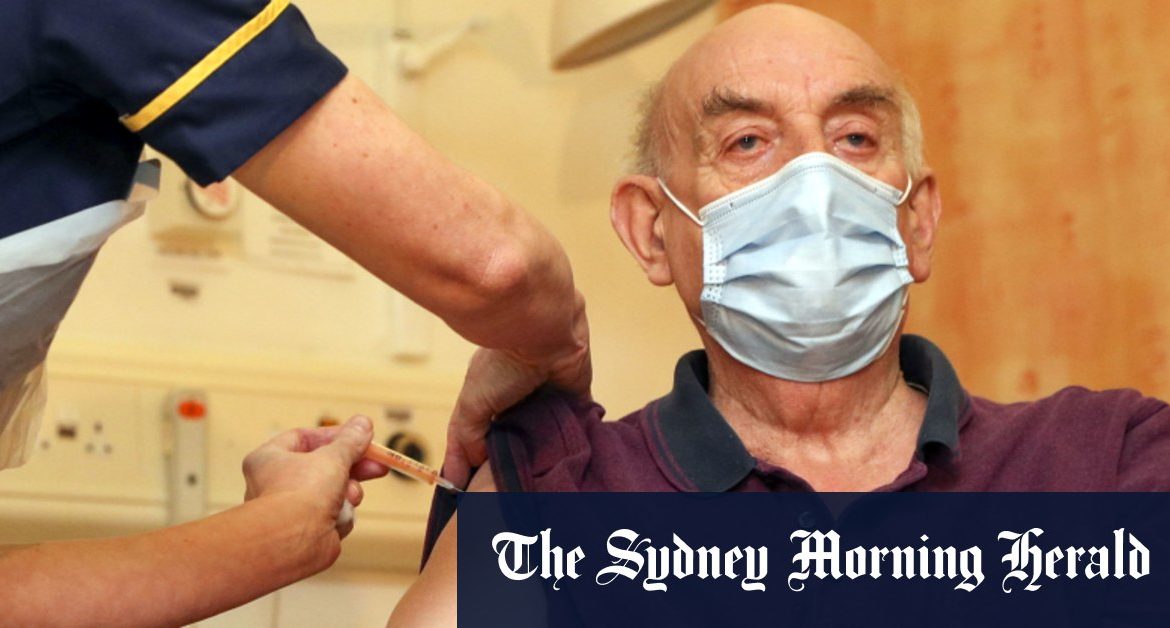Loading
Mr Hunt said he anticipated the Therapeutic Goods Administration would grant provisional registration to Pfizer’s jab later this month.
Tens of thousands of doses of the vaccine are then expected to arrive in Australia every month.
Defending the decision to roll out in March, Mr Hunt told 2GB radio on Wednesday that Australia was taking a similar approach to Japan, South Korea, New Zealand and Taiwan – jurisdictions that have been among the most successful in handling the virus – and had committed to a full safety assessment process.
“They’re all looking at a very similar time frame. [It] puts us in the group of countries that have been highly successful but very thorough,” Mr Hunt said.
He said those pushing the government to commit to an earlier date were seeking to follow the paths of Europe and North America, which had been less effective in responding to the pandemic.
Mr Hunt confirmed three groups would be eligible for the first round of vaccinations: front-line workers (particularly those dealing with international arrivals), healthcare workers and aged care residents.
“Then we’ll work through it in terms of age and other priorities which are currently being finalised by the medical expert panel … working down in age and then other vulnerabilities,” he said.
The latter group would include people with a disability and Indigenous people.
“That’s still being finalised but it’s not a surprising approach: simply follow the vulnerability and the risk of transmission or consequence of infection,” he said.
Mr Hunt said the government’s priority was protecting Australians and maintaining confidence in vaccinations. Australia’s vaccination rate was about 95 per cent for five-year-olds, he said, and he wanted to maintain that rate.
Leading Australian scientists, including Professor Edward Holmes, one of Australia’s top coronavirus experts, called this week for the vaccine rollout to be accelerated.
Clinical trials suggest Pfizer’s vaccine is 95 per cent effective at protecting against COVID-19. The data on AstraZeneca’s jab is less clear-cut: using standard doses it is 62 per cent effective.
Loading
The decision to approve any vaccine is made by regulators on a balance of risk: the known and unknown risks of the vaccine versus the known and unknown risks of not administering it.
The less data a regulator has to make a decision, the greater the chance of unexpected side-effects.
It makes sense to do this in places with urgent need, like the US or Britain, where the rewards outweigh that risk, Professor Allen Cheng, Victoria’s Deputy Chief Health Officer and chair of the federal government’s Advisory Committee for Vaccines, wrote on Twitter on Monday night.
But Australia has a far lower need for an urgent rollout, shifting the balance of risk and reward, he wrote.
“Ultimately, the question is whether the benefit of using the vaccine outweighs the known risks and the uncertainties. Countries where there are hundreds or thousands of deaths each day are clearly willing to tolerate some uncertainty to prevent this, and this is appropriate,” he wrote.
“But we’re in a different position in Australia – even with the current situation in NSW and VIC, we can afford to wait for the TGA to do its job and make sure we’re getting a safe, effective and quality vaccine.”
Examine newsletter
Science and health explained and analysed with a rigorous focus on the evidence. Examine is a weekly newsletter by science reporter Liam Mannix. Coming soon, sign up now.
Liam is The Age and Sydney Morning Herald’s science reporter
Most Viewed in National
Loading







